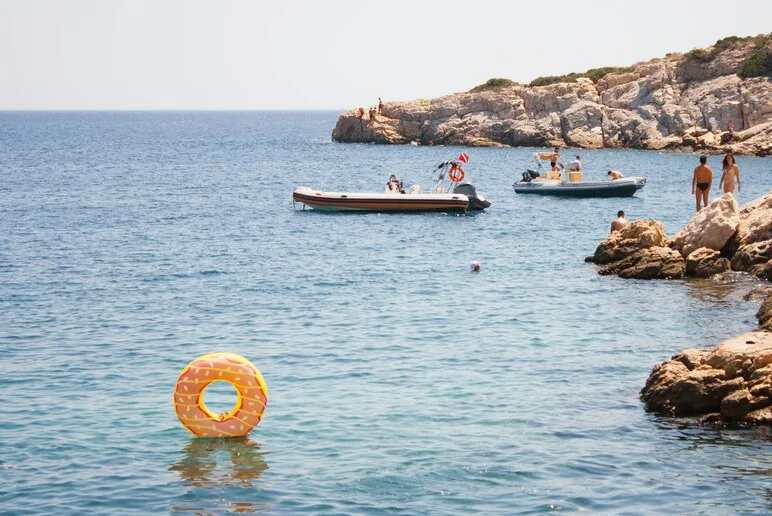
Stepping into Europe for the first time feels like entering a living dream—where every cobblestone street whispers tales of centuries past and every sunset casts a golden glow over timeless landscapes. The continent unfolds like a storybook, rich with magnetic cultures, breathtaking architecture, and hidden corners waiting to be discovered.
Europe invites you to lose yourself in its magic and wonder.
It’s a symphony of experiences, both grand and intimate, where the familiar elegance of iconic landmarks mingles effortlessly with the quiet charm of secluded cafés and secret gardens. First-timers are encouraged to wander slowly, delight in deeply, and dream freely—every moment feels touched by history yet alive with possibility.
Planning your first journey to Europe is an exciting milestone—one filled with art, culture, food, and the thrill of discovering unfamiliar places. But navigating new customs, currencies, and cities can come with a learning curve.
Before we go on, there’s one point to boldly make: avoid overplanning. Europe’s richness lies in its variety—but trying to cram too much into one trip often backfires. Prioritise quality over quantity. Rather than racing between cities, take the time to fully experience each place. Travel isn’t just about what you see—it’s about how you feel in a place. Leave room for spontaneity! Slow is often better. No matter where you go, your first trip to Europe is bound to be unforgettable.
Feel more confident and travel-savvy from the start with our thoughtfully curated tips to elevate your European experience, minimise surprises, and ensure your trip runs smoothly.
Anticipate summer crowds
Europe’s iconic landmarks attract millions every summer, and high season (July–August) can be intensely crowded. For a more relaxed experience, consider travelling in May, June, or September—when the weather is still lovely, but crowds thin. Rise early to beat the lines, book tickets to major attractions in advance, and don’t be afraid to explore lesser-known cities. Instead of rushing from sight to sight, allow space in your itinerary to wander, rest, and discover hidden corners.
Be ready for multiple currencies
While the euro is used across much of Europe, don’t assume it’s universal. Some countries use their own currencies, such as Switzerland (Swiss franc), the Czech Republic (koruna), Hungary (forint), and Poland (zloty). Rather than exchanging cash constantly, download a reliable currency converter app and use local ATMs, which typically offer better rates. Avoid street exchanges; always use official currency exchange points and ask for a receipt.
Bring the right power adapters
European plugs aren't universal. Most of Europe uses a two-prong Type C or E/F plug, but the UK and Ireland use a three-prong Type G. Invest in a quality universal adapter before you go. Airport shops and souvenir stands often sell overpriced, unreliable ones. Also, double-check your devices: Europe uses 220V, so make sure your chargers and appliances are compatible.

Check your mobile plan before departure
Staying connected is easier than ever, yet international data can be expensive if you’re unprepared. Contact your carrier to understand roaming charges, or consider buying a European eSIM or prepaid SIM card. Wi-Fi is widely available in hotels, cafés, and public spaces, and many apps—from Google Maps to Google Translate—make navigating foreign countries seamless. A portable power bank is also a smart investment, especially for long sightseeing days or train journeys.
Embrace language differences—with grace
Europe is home to more than 200 languages, but don’t be intimidated—English is widely spoken in tourist areas, and locals are generally warm and helpful. In countries like the Netherlands, you’ll find near-universal English fluency, while in others, service workers typically speak basic conversational English. Still, learning a few local phrases— hello, thank you, and excuse me—is both respectful and endearing. These small gestures go a long way and often open the door to more meaningful interactions.
Pack light—and wisely
One of the cardinal rules of European travel: don’t overpack. You’ll likely be navigating narrow staircases, cobblestone streets, and public transport—lugging a heavy suitcase can quickly become a burden. Opt for versatile layers, leave “just in case” items at home, and embrace the opportunity to shop locally if you’ve forgotten anything. Travel light, and your journey will feel infinitely freer.
Travel smart and stay safe
Europe is remarkably safe, but petty crime—especially pickpocketing—is a known issue in some cities. Stay alert on crowded metros and trams, avoid carrying large amounts of cash, and use hotel safes for passports and extra cards. Ask locals or hotel staff about neighbourhoods to avoid, particularly after dark. Make digital copies of important documents and store them securely online. A little caution goes a long way—and shouldn’t dampen your sense of adventure.

Understand the nuances of tipping culture
While tipping is appreciated, it's rarely expected, especially since service staff in most countries receive a livable wage. In places like Iceland, tipping is actively discouraged; in Belgium and Switzerland, it’s considered kind but unnecessary. In the Czech Republic, a modest 10 per cent is customary, while in France and across the Mediterranean, a service charge is often included—check the bill carefully, and only tip (typically 10–12 per cent) if it’s not. In Germany and Austria, leaving change on the table is frowned upon. Hand the tip directly to your server or indicate the final amount during payment. When in doubt, a polite inquiry is always welcomed: "Is tipping customary here?"
Use public transportation with confidence
European cities are well-connected, efficient, and budget-friendly when it comes to public transport. From metros and trams to high-speed rail, you’ll find day or multi-day travel passes that offer excellent value. Don’t be intimidated—many systems are easy to navigate, and English signage is common. If you get off track, just hop off and reorient—there’s no harm in getting a little lost. Many cities also offer public bike rentals and are highly walkable, allowing you to soak up the street life at your own pace.




 Mirella Pandjaitan
Mirella Pandjaitan
 Nov 04, 2025
Nov 04, 2025